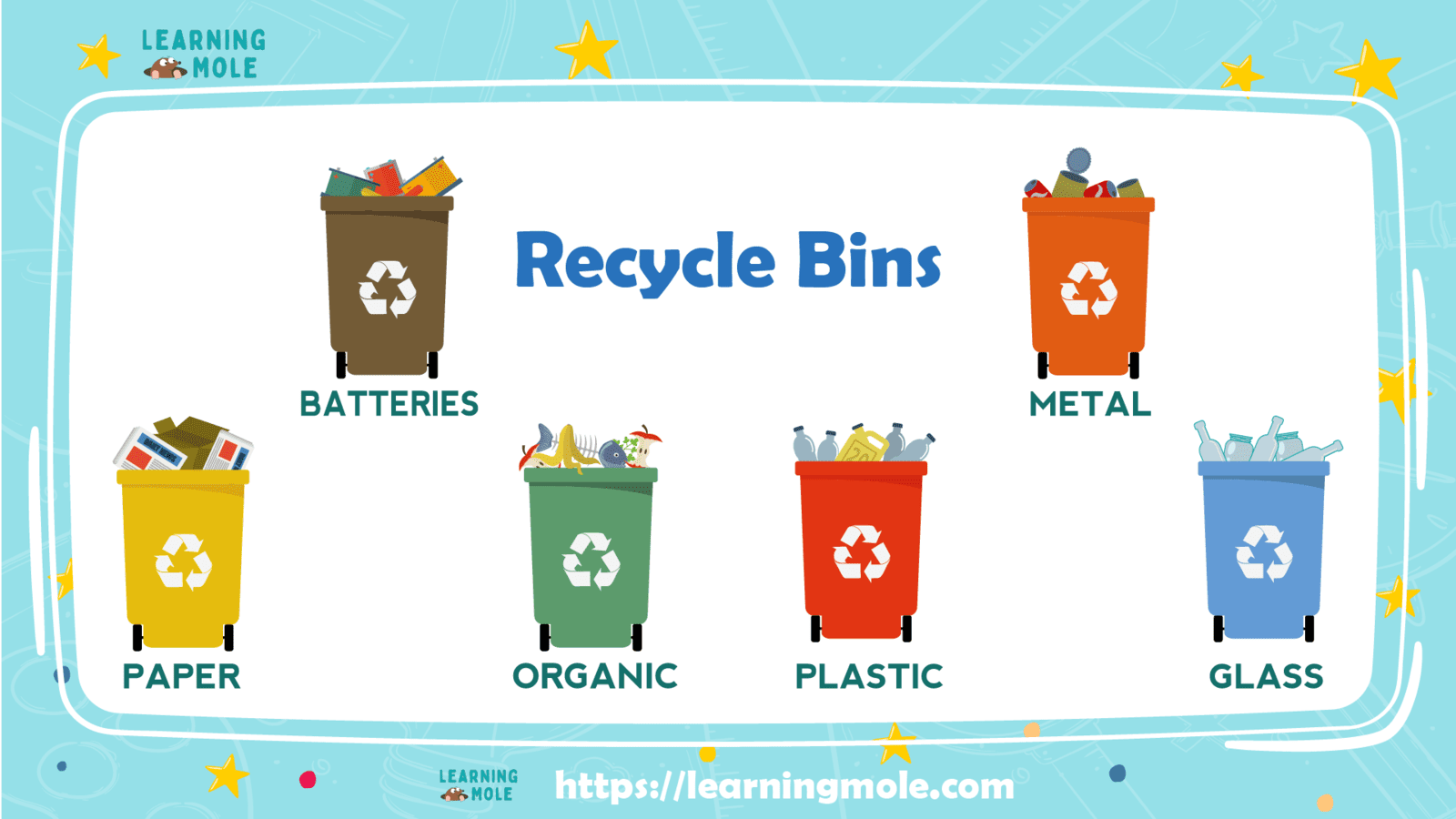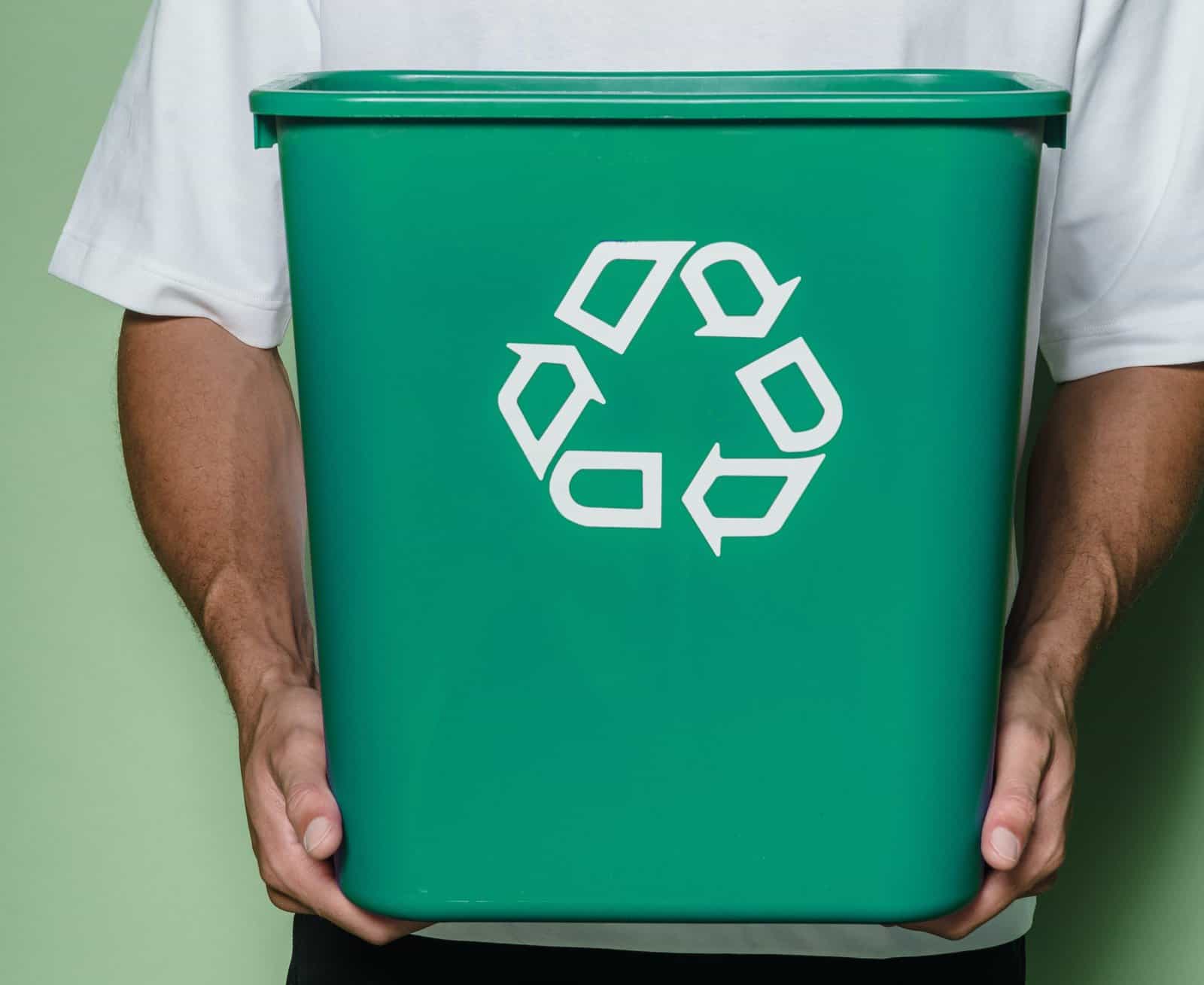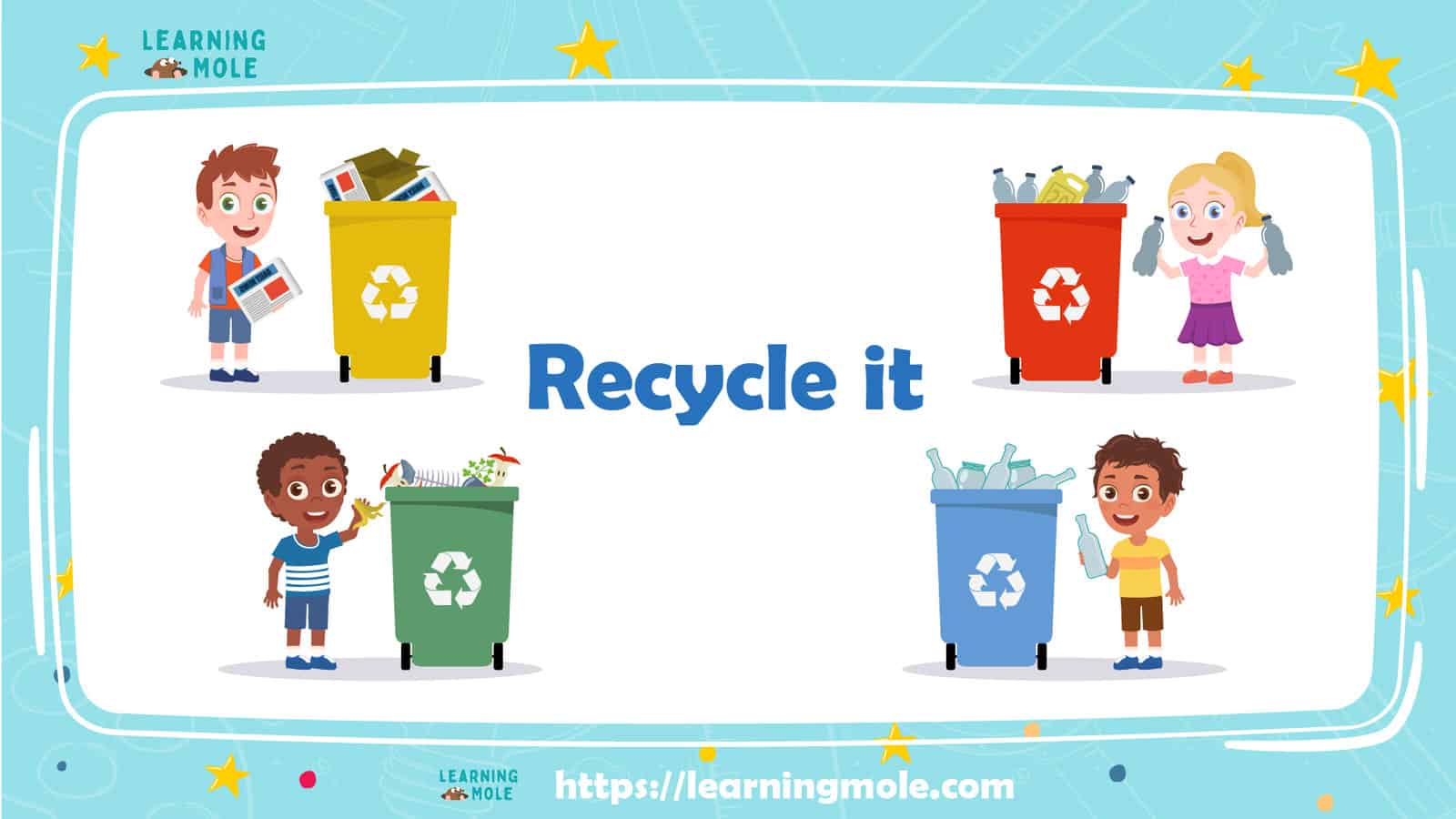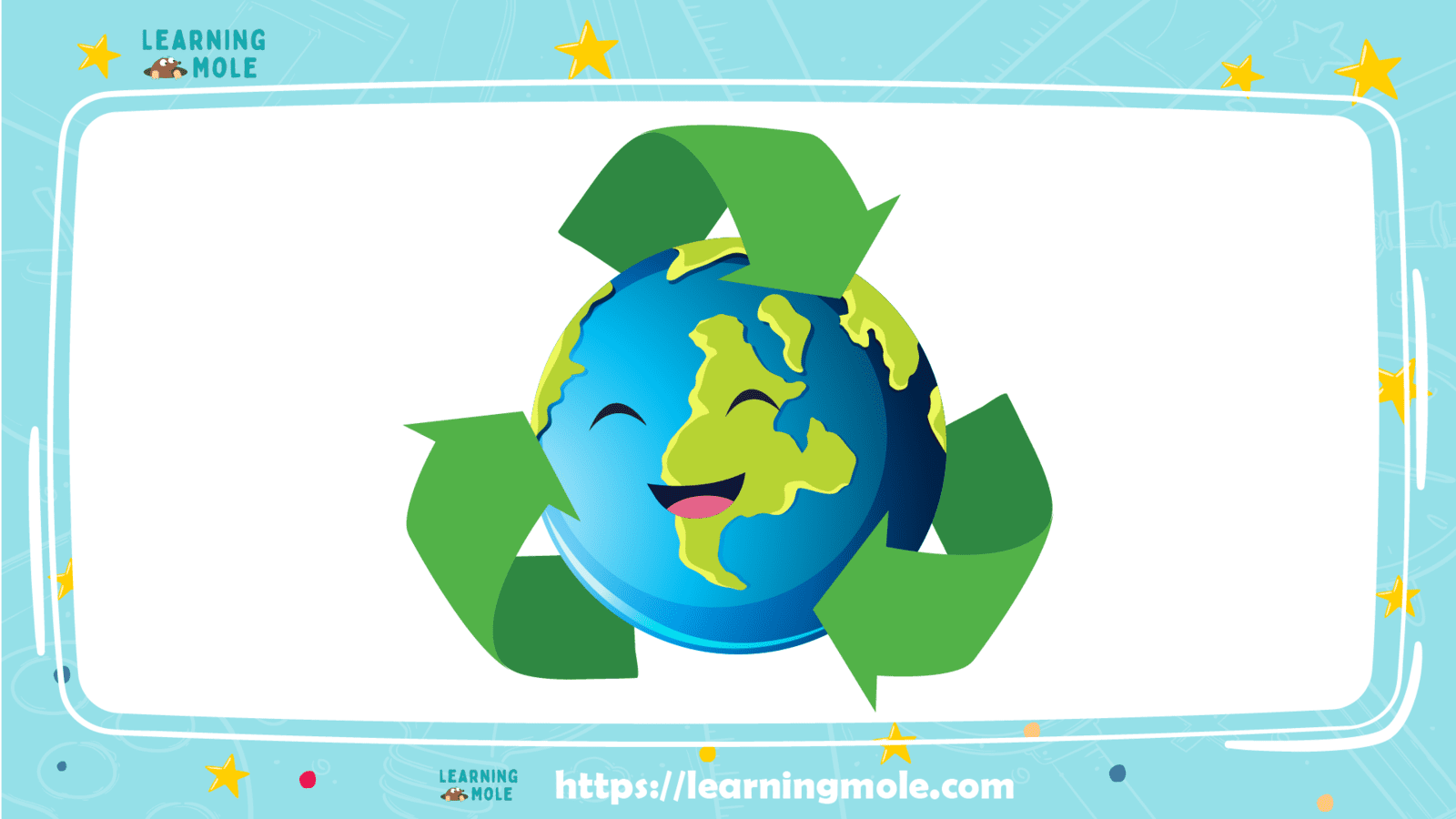
5 Amazing Facts on Why Recycling is so Important
Why is Recycling Important?
The importance of recycling is something that we should be teaching the younger generation at a very early age. Recycling and recycling projects for kids are all areas we should be getting involved in.
It’s ‘Our World’, we all need to take care of it by educating children about recycling facts and the benefits of recycling, we are allowing them to see why it is just so important.
Teaching children to care for the environment is a learning experience that is an influential part of growing up. It gives them skills in respect, empathy, patience, and responsibility, and teaches them about consequences.
But it also teaches them valuable lessons about sustainability and how we want to leave the world for future generations. Showing children how to recycle properly is like passing the baton to them for a cleaner and brighter future.
Throwing plastics, cans, and paper in the recycling bin is more than just sorting the recyclables. It’s teaching young people about saving money by showing them how they can avoid waste. With can and bottle recycling, they learn about the benefits of cashing in the household, as well as discovering that taking their recyclables to the Scouts helps to fund the groups. This learned appreciation for the value of money is a lifelong skill best learned young.
Kids also learn about energy conservation and saving resources, through recycling. When you sort your garbage out, you can see how much you can reuse and put it to good use, jewelers, paint pots, and papier-mâché. With that in mind, kids also learn that when they recycle newspapers, the paper will turn back into newspapers, and bottles into other bottles.
When young people know that the things, they use can become other useful things, it can give them a better incentive to want to recycle. Who wouldn’t want to be a part of the cycle of things?
This video explores reducing recycling symbols, gives interesting facts about it and explains the significance of the recycling logo. It helps to teach children to reuse and to understand the benefits of recycling.
Table of Contents
What is it to Recycle?
Whether it’s plastic, paper, or aluminium, the products and materials that can be used after they fulfil their original purpose are far from worthless. In fact, most materials have great recycling value. It is estimated that up to 75% of all the waste can be recycled or repurposed, a figure that how impactful the process can be if done right. Almost everything we see around us can be recycled, although different materials require different techniques when they are recycled. Most of the common materials include batteries, biodegradable waste, clothing, electronics, garments, glass, metals, paper, plastics, and a lot more.

The Different Recycling Bins
It is so important that you go to a recycling centre to dispose of your waste correctly. If you do not have a recycling bin you can simply google “recycling centres near me”, and you will find recycling centres to bring your waste nearby. There are different bins as we can see in the image above for different types of recyclable materials. Let’s have a look at what you can put inside each recycling bin above;
Brown Bin
The Brown recycling bin is for batteries. Batteries can contain metals such as lead, copper and zinc. In batteries, these metals can be very harmful to the environment. Most batteries not recycled properly are toxic to the environment. When you recycle batteries, the metals inside can be removed properly and then reused. The parts of a battery that cannot be reused are then disposed of correctly in order to not cause harm to the environment. This includes batteries in your computer game, remote control, watch or even car batteries!
Orange Bin
The Orange recycling bin is for recycling metals. Nearly all metals in your home can be recycled. The most recycled metals are aluminium, brass, bronze, steel, and tin. When most metals are recycled, they are reused to make new products. Some metals, such as steel can also be recycled continuously without losing their original strength. Metal objects you may have at home that can be recycled are cans, metal toys, cutlery or pipes.
Yellow Bin
The Yellow recycling bin above is used for recycling paper. As we know paper is made from trees, the more paper we recycle the better we can preserve our forests. By preserving forests, you can save wildlife homes and create cleaner air for us to breathe in. When creating products from recycled paper far less air pollution is produced than when using raw materials. Examples of paper that can be recycled in your home are cardboard, newspapers, catalogues, and plain cards. It is important to remember that any paper that’s coated in a material like foil, plastic, or wax cannot be recycled.
Green Bin
In the above picture, the green recycling bin is labeled organic. This means that organic materials can be recycled in it. You may know this bin by another name, such as a compost bin. Examples of organic materials that you can recycle in your home are fruits, vegetables, eggshells, egg cartons, coffee granules, tea bags, and food-soiled cardboard such as takeaway cartoons.
Red Bin
The Red recycling bin above is for plastic waste. Both soft and rigid plastics can now be recycled. Rigid plastics include plastic milk and water bottles, plastic tubs and containers, yogurt pots, and shampoo bottles. It does not matter what colour the plastic is. Soft plastic is a plastic that can be scrunched up in your hand easily. Soft plastic that you may have at your home may be a plastic wrap that comes on products, bubble wrap, and bread wrappers.
Blue Bin
The Blue recycling bin in the image above is for glass. If you do not have a glass bin at home, you can go to a bottle bank. If the glass is clear, green, brown, or blue it can be recycled. Frosted bottles can also go in the bottle bank. Examples of recyclable glass that you may have at home are glass jars, glass bottles, and perfume bottles. An example of glass that cannot be recycled in a bottle bank is glass cookware or light bulbs. It is important that you rinse out your glass jar before recycling it.
Recycling Signs

On many products you buy there will be a recycling symbol on it. This symbol lets you know whether or not the product is recyclable and if so, what recycling bin it goes in. It also indicates if a product has been already recycled. A product can have more than one recycling sign on it. It is important to take notice of these symbols so that you can recycle products correctly.
The recycling sign that you see on the bin in the image above is called the Mobius Loop. This symbol indicates that a product’s packaging can be recycled. It doesn’t tell you that the product has been recycled.
On glass containers, you will usually see a triangular symbol with a stick person putting a jar into the bin. This is the Glass Recycling logo, and it means that the glass container can be recycled and brought to your local bottle bank.
The Green Dot is a symbol that looks like a white and green arrow wrapped around each other in a circle. The Green Dot is a European symbol that lets us know that the suppliers and producers of a product have contributed money towards the recycling of packaging in Europe. It doesn’t mean that the package is recyclable as such.
You will also often see an image of a stick person putting rubbish into a netted trash can. This is known as the Tidyman symbol, and it is put on products to remind you to put your rubbish in the bin.
If a product has a picture of a bin with an X going through it, it tells you that the product is non–household waste. This is usually on electrical appliances as they cannot be recycled in your household bin, instead, they have to be brought to WEEE points.
Types of Recycled Materials
It’s important to recycle any materials possible, but one of the most relevant is plastics, as they are such a big part of the solid waste that we make. When plastic is sent to a landfill, it does not break down as it’s not biodegradable, and even in ocean water, plastic stays around forever, breaking down into smaller and smaller pieces (microplastics). Most plastics are used only once before they are discarded, known as single-use plastics — this type of single-use plastic is already being banned in many parts of the world.
Metal is also very important as it saves energy, reduces emissions, and creates jobs. Using recycled metal, known as scrap metal, instead of new metal reduces mining waste by 97% and saves more than 90% on energy, depending on the material. Recycled metals create six times more jobs than sending the metals to a landfill.
Recycling helps extend our life
Some ways to reduce and reuse include looking for products that use less packaging, which means less raw materials, buying reusable over disposable items, maintaining and repairing products like clothing, so they don’t have to be thrown away, and borrowing, renting, or sharing items that are used infrequently like tools. Reducing our consumption should be the first step, and reusing also tends to be far more sustainable than recycling. Recycling means turning an item into raw materials that can be used again, either for the same product or a new one, while reusing means using an object as it is, without treatment.
Recycling helps conserve important raw materials and protects natural habitats for the future.
Reducing – Try to reduce the amount of waste you produce, as this is the best way to help the environment!
Reusing – Think of ways you could reuse something, like shredding paper for your hamster rather than buying bedding or saving glass jars for storage.

Get kids involved by:
- Setting recycling chores
- Let them be in charge of bringing reusable shopping bags to stores
- Let them sort the recycling
- Decorate bins in different colours for each recycling category
- Create a compost heap
- Take them to donate their old clothes and toys
- Have arts and crafts time with recycled materials
- Give them books about recycling that are appropriate for their age
Once kids learn to recycle at home, they can spread the word and make sure people are sorting recyclables at school, at their sports clubs, and with their friends. A sustainable future depends on what we do today, and good habits can become second nature.
Recycling, Reduce and Reuse
For extracting (mining, quarrying, and logging), refining, and processing raw materials, all of which create substantial air and water pollution. As recycling saves energy, it also reduces greenhouse gas emissions, which helps to tackle climate change.
When we recycle, used materials are converted into new products, reducing the need to consume natural resources. If used materials are not recycled, new products are made by extracting fresh, raw material from the Earth, through mining and forestry.
Recycling helps conserve important raw materials and protects natural habitats for the future.
Some ways to reduce and reuse include looking for products that use less packaging, which means less raw materials, buying reusable over disposable items, maintaining and repairing products like clothing, so they don’t have to be thrown away, and borrowing, renting, or sharing items that are used infrequently like tools.
Reducing our consumption should be the first step and reusing also tends to be far more sustainable than recycling. Recycling means turning an item into raw materials that can be used again, either for the same product or a new one, while reusing means using an object as it is, without treatment.
Recycling Saves Energy
Using recycled materials in the manufacturing process uses considerably less energy than that required for producing new products from raw materials – even when comparing all associated costs, including transport, etc.
Plus, there are extra energy savings because more energy is required to extract, refine, transport, and process raw materials ready for industry compared with providing industry-ready materials.
Reducing – Try to reduce the amount of waste you produce, as this is the best way to help the environment! If you cannot avoid producing the waste, try…
Reusing – Think of ways you could reuse something, like shredding paper for your hamster rather than buying bedding or saving glass jars for storage. If you cannot reuse something, try…
Five Benefits of Recycling
- Reduces waste sent to landfills and incinerators. When we recycle, recyclable materials are reprocessed into new products, and as a result, the amount of rubbish sent to landfill sites is reduced. There are over 1,500 landfill sites in the UK, and in 2001, these sites produced a quarter of the UK’s emissions of methane, a powerful greenhouse gas.
- Prevents pollution. Recycling reduces the need for extracting (mining, quarrying and logging), refining, and processing raw materials, all of which create substantial air and water pollution. As recycling saves energy, it also reduces greenhouse gas emissions, which helps to tackle climate change. Currently UK recycling is estimated to save more than 18 million tons of CO2 a year – the equivalent of taking 5 million cars off the road.
- Conserves natural resources. When we recycle, used materials are converted into new products, reducing the need to consume natural resources. If used materials are not recycled, new products are made by extracting fresh, raw materials from the Earth, through mining and forestry. Recycling helps conserve important raw materials and protects natural habitats for the future.
- Conserves energy. Using recycled materials in the manufacturing process uses considerably less energy than that required for producing new products.
- Creates jobs, producing economic benefits.
Recycling is much more than just reducing the amount of waste sent to the landfill, with a long list of benefits that aren’t limited to the environment — there are economic and social advantages to recycling.

Even as we live in a consumer-driven world, with a growing appetite for new things, if we begin to look at the waste created by this level of consumption in a different light, we might turn our problem into an opportunity for a great life.
So, let us work together to help our Planet by disposing of recyclables thoughtfully, you are already contributing to a more sustainable planet, but by recycling, you are helping to preserve raw materials, use less energy, reduce landfills, and toxic material leached into the ground through landfills.
Explore the previous examples and facts, and you will find yourself getting the necessary knowledge and information to fully grasp the concept of recycling. So, keep on visiting our Learning Mole to get more information about this topic and so much more!


Leave a Reply